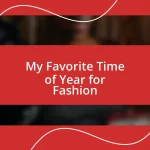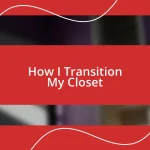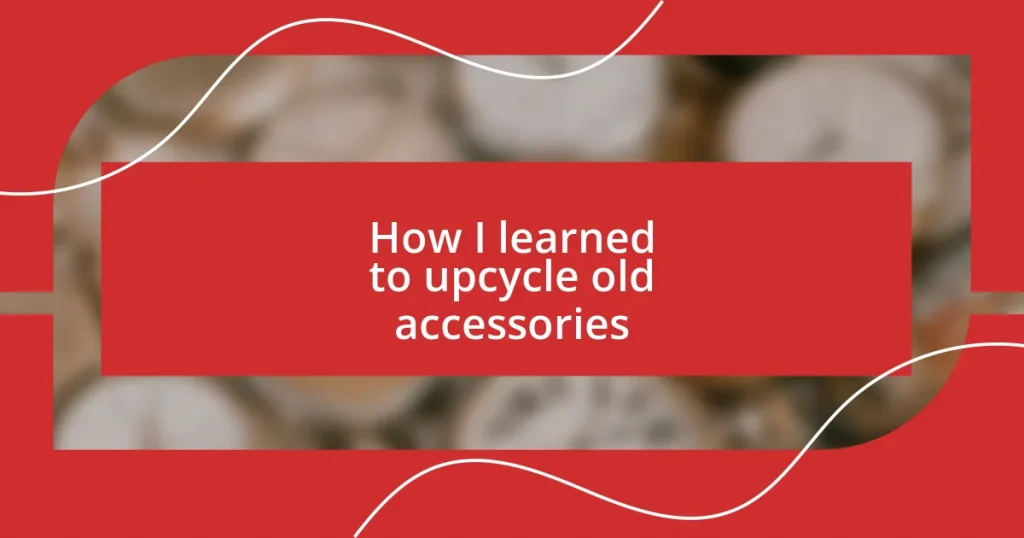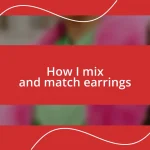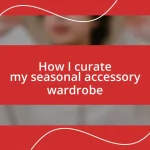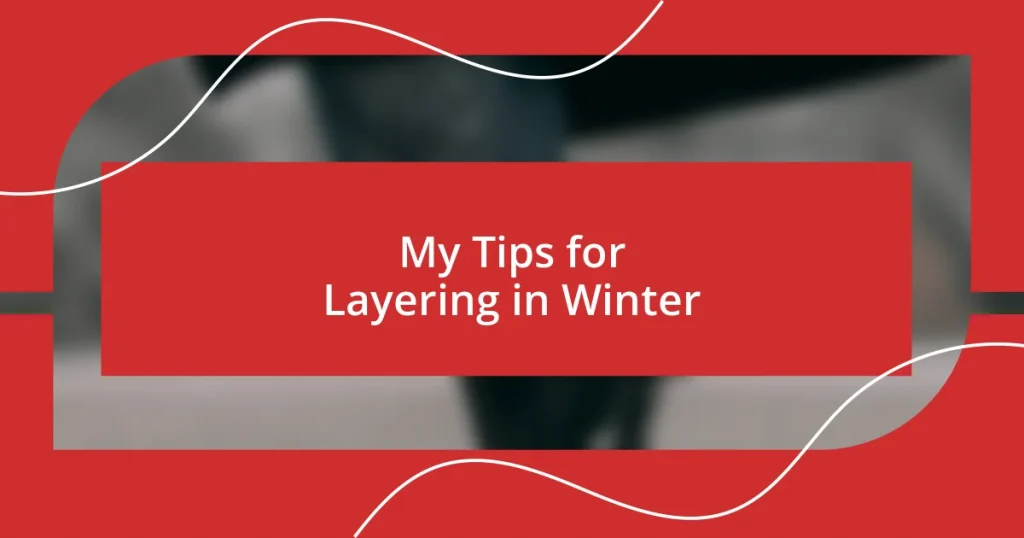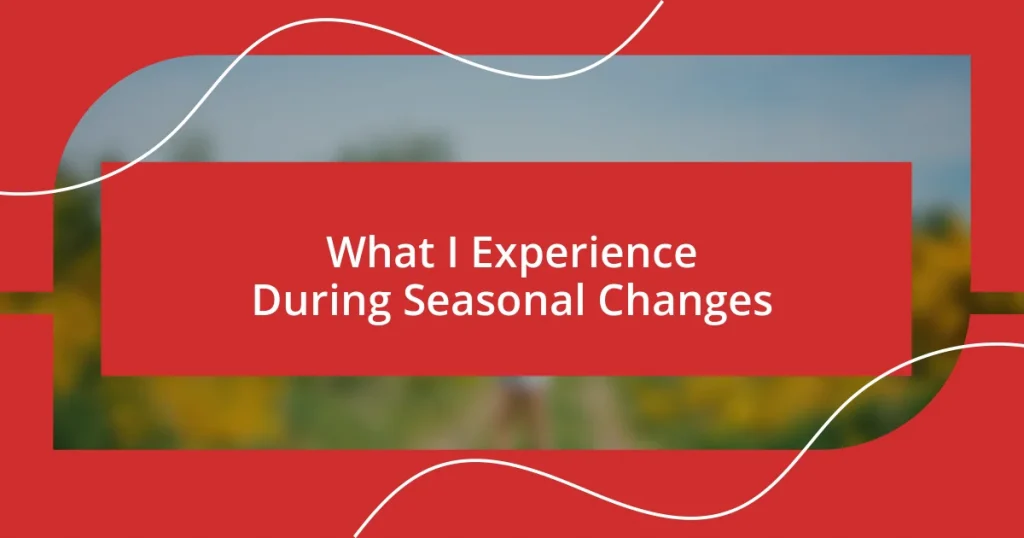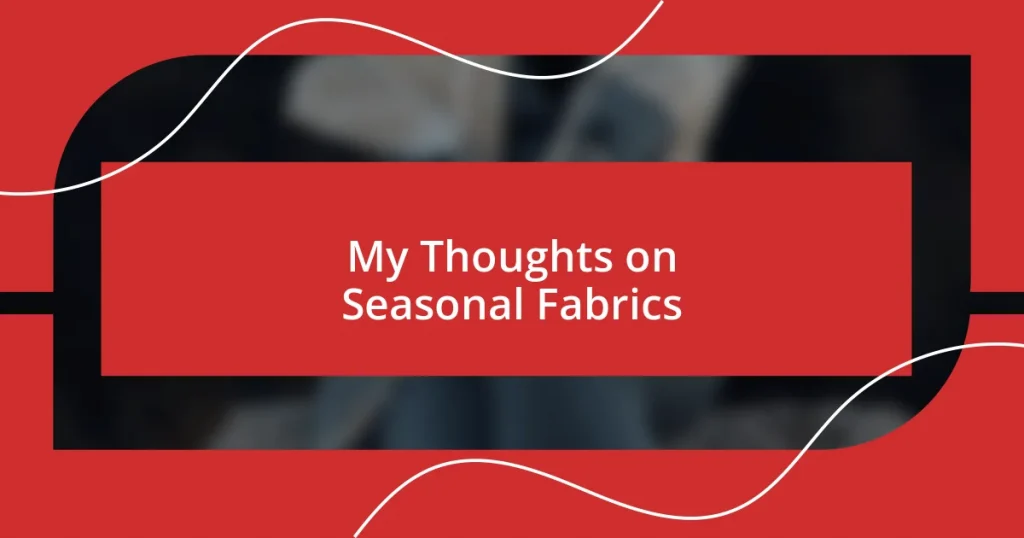Key takeaways:
- Upcycling accessories promotes creativity and sustainability, allowing individuals to transform sentimental items into unique fashion pieces.
- Choosing items with sentimental value and potential for transformation, along with the right tools and materials, enhances the upcycling process.
- Effective presentation, storytelling, and social media engagement are crucial for successfully selling upcycled accessories, making them relatable and appealing to customers.
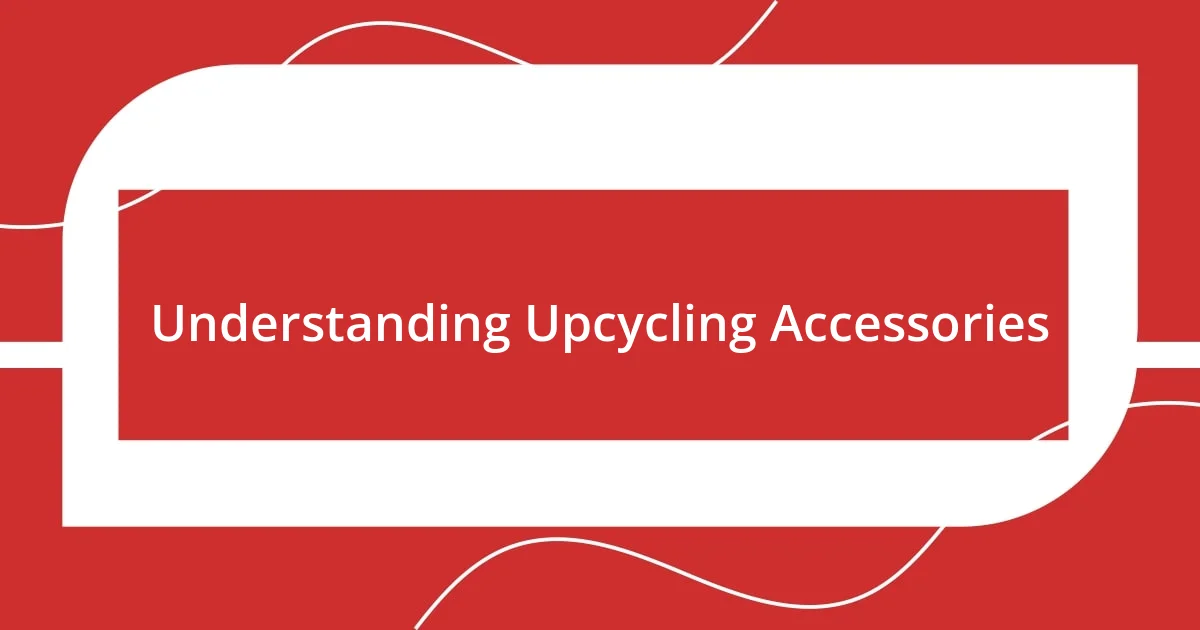
Understanding Upcycling Accessories
Upcycling accessories is an empowering way to breathe new life into items that might otherwise be discarded. I remember a time when I stumbled upon an old pair of earrings my grandmother used to wear; they were tarnished and outdated, but I felt an emotional attachment to them. This attachment sparked my curiosity—what if I could transform these into something wearable and trendy?
The beauty of upcycling lies in creativity and sustainability; it encourages us to think outside the box. Have you ever considered how much waste we generate with each new purchase? I’ve found that by reimagining what I have, I not only reduce waste but also cultivate a deeper relationship with my belongings. For instance, I crafted a necklace from an old brooch, reminding me of my childhood every time I wear it.
Understanding upcycling isn’t just about the physical transformation; it’s about the stories we tell through our creations. When I wear the pieces I’ve upcycled, I feel a sense of pride and individuality. It’s incredible to think about how our personal history can influence our style. What stories do your accessories tell? Each piece has the potential to carry a slice of our past while becoming a part of our future—so why not explore that transformative journey?
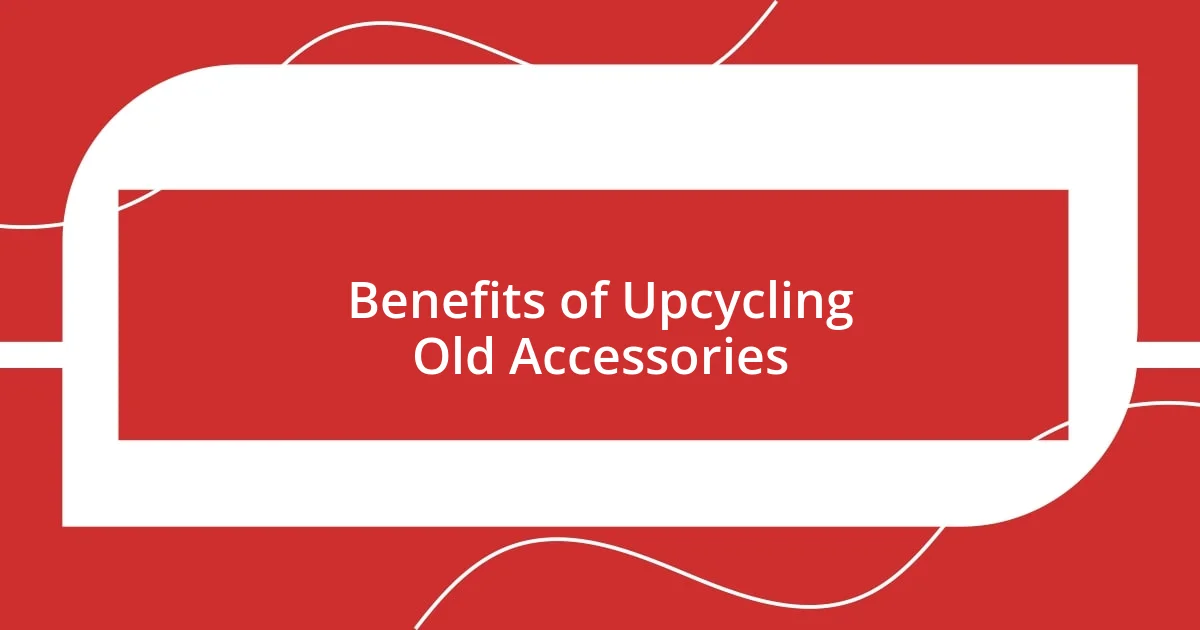
Benefits of Upcycling Old Accessories
Upcycling old accessories offers a fantastic way to express individual creativity while also promoting eco-friendliness. I once turned a mismatched pair of earrings into a charming bracelet that became a conversation starter at a gathering. It’s not just about aesthetics; it’s about the joy of transforming something unloved into a statement piece that reflects my unique style.
Moreover, upcycling can save money while enhancing your wardrobe. When I found an old belt at a thrift store, I had the idea to convert it into a chic hair accessory. This simple transformation reminded me that we can redefine fashion without emptying our wallets. It’s an empowering process that allows us to stretch our imagination, all while keeping our budgets in check.
Lastly, the act of upcycling connects us to the stories behind our items. Each creation holds a memory for me—like the time I repurposed an old scarf into a stylish bag, reminiscent of my travels. Every time I use that bag, I’m transported back to those experiences. Isn’t it wonderful how upcycled items can become vessels of nostalgia while contributing positively to our environment?
| Benefits | Examples |
|---|---|
| Creativity Boost | Transforming earrings into bracelets or other accessories |
| Cost-Effective | Converting thrift store finds into fashionable pieces |
| Nostalgia | Repurposing items linked to memories, like scarves into bags |
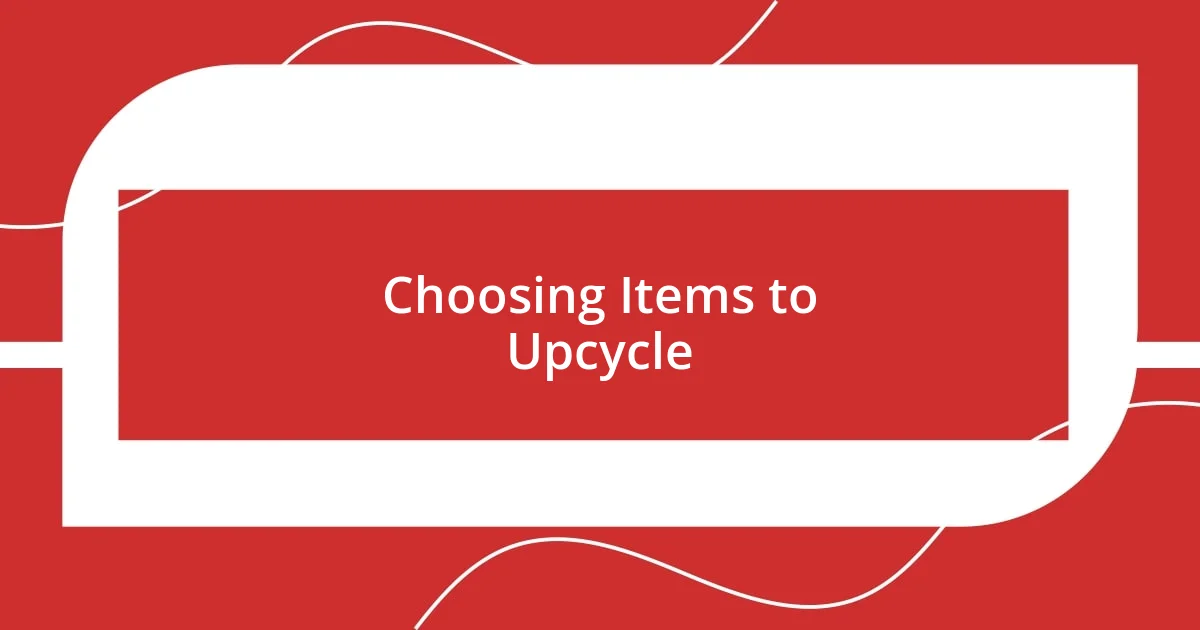
Choosing Items to Upcycle
Choosing the right items to upcycle can greatly influence your creative journey. I often start with pieces that hold sentimental value, even if they seem outdated. For example, a long-forgotten bracelet from my childhood became the perfect base for a modern floral detail. It’s amazing how a simple item can evoke memories and inspire a fresh design.
When selecting items to upcycle, consider the following factors:
- Sentimental Value: Look for items that bring back fond memories or carry personal significance.
- Material Quality: Choose pieces made from durable materials that can withstand alteration and wear.
- Flexibility: Pick items that can be easily transformed—things like brooches, old jewelry, or mismatched earrings are great candidates.
- Aesthetic Potential: Visualize how the item can fit into your current style; trust your instincts on what could shine with a little creativity.
- Sustainability Aspect: Reflect on the environmental benefits of repurposing—every small step counts in reducing waste!
This method has led me to surprising and delightful transformations, often sparking new ideas for future projects. The thrill of uncovering hidden potential in overlooked items never gets old!
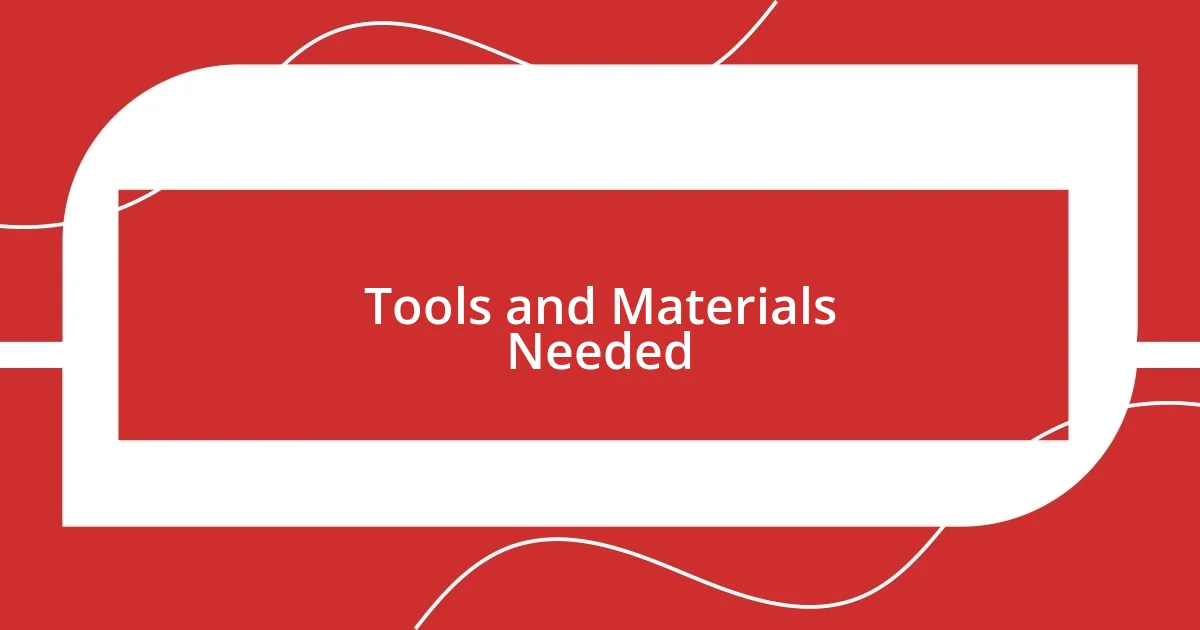
Tools and Materials Needed
When it comes to upcycling old accessories, gathering the right tools and materials can make all the difference. I’ve found that a good pair of pliers is essential for bending and cutting metal pieces, especially when you’re dealing with old jewelry. How many times have you struggled with a stubborn clasp? A quality pair of pliers not only saves time but also helps avoid frustration.
In addition to tools, I recommend stocking up on a variety of embellishments. Think beads, fabric scraps, and ribbon—these can add unique charm to your creations. I vividly remember rummaging through my craft box and finding a stash of colorful beads from childhood projects. Incorporating those into a new piece felt like bringing a part of my past into something fresh and new. It’s incredible how little elements can breathe life into what could otherwise be plain items.
Lastly, my crafting arsenal wouldn’t be complete without a hot glue gun and some trusty scissors. Whether I need to attach a brooch to a sturdy clasp or snip a piece of fabric to fit a new design, these tools make the process smoother. There’s something satisfying about transforming a jumble of odds and ends into a cohesive piece that’s uniquely yours. Have you ever thought about how such simple tools can unlock so much creativity? It’s a beautifully empowering experience that keeps me reaching for new projects again and again.
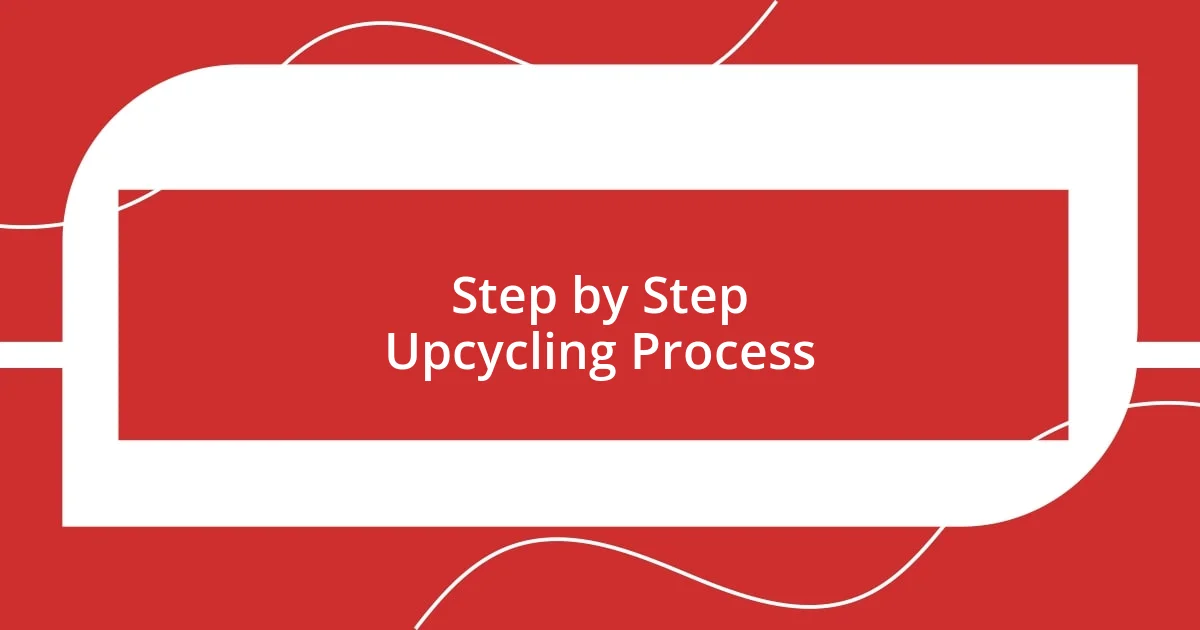
Step by Step Upcycling Process
When I approach the upcycling process, I like to lay everything out before me. I take a moment to really see the potential in each piece, using my imagination to envision its new life. One of my favorite transformations was an old leather belt I found buried in the back of my closet. By simply cutting it into strips and weaving them into a trendy bracelet, I breathed life back into something that was once forgotten. Have you ever experienced that spark of creativity when you least expected it? It’s a thrilling feeling.
Once I have a clear vision, I begin my upcycling project by cleaning the items thoroughly. I remember tackling an antique brooch that was hidden under layers of dust; a good polish revealed its true beauty. Using mild soap and a soft cloth, I removed years of neglect, transforming it into a shining surface ready for customization. Trust me, taking that little step makes a world of difference—it’s like peeling back the layers of an onion to find the treasure inside!
Finally, I map out my design and start assembling my upcycled creation. I often do this on my living room floor, surrounded by swatches of fabric and scattered beads, letting intuition guide my choices. It’s here that I try different combinations until something clicks. Last summer, I crafted a pair of earrings from broken chains and colorful charms; mixing and matching until they felt just right was such a joyful process. Can you remember a time when you designed something purely by instinct? That organic flow not only cultivates creativity but also strengthens your connection to each piece you create.
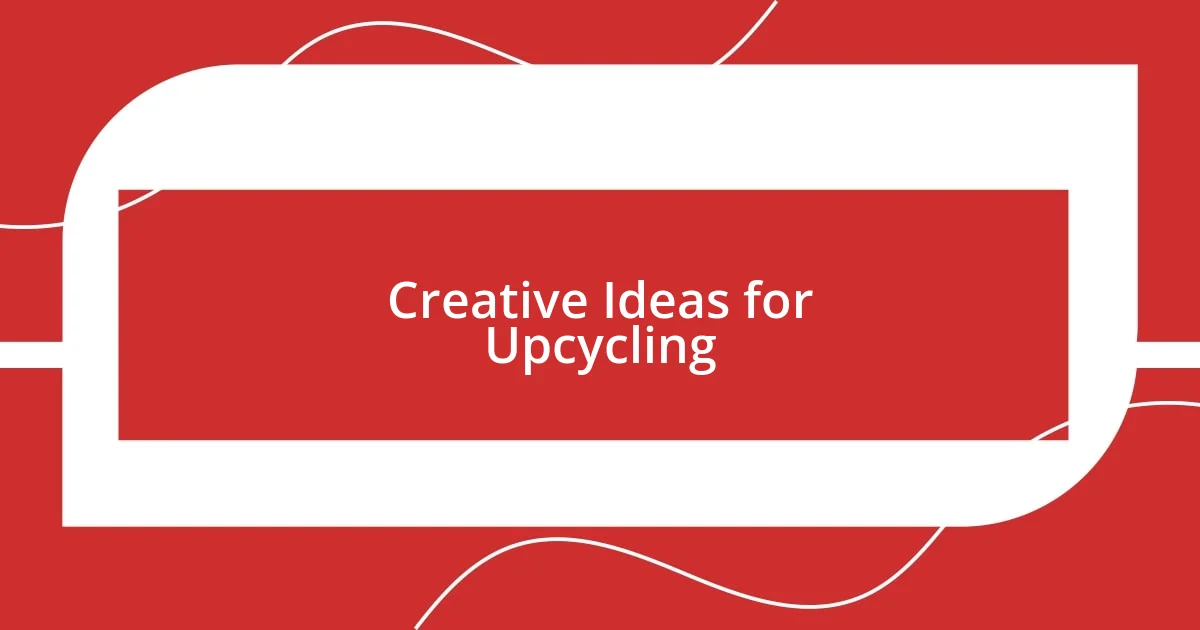
Creative Ideas for Upcycling
One of my absolute favorite ways to upcycle old accessories is by transforming worn-out earrings into hair clips. I remember a pair of beautiful vintage clip-on earrings I had, but one had gone missing. Instead of letting them languish in my drawer, I simply glued them to a sturdy hair clip, turning a potential loss into a fresh, eye-catching accessory. Have you ever thought about how a simple swap can completely change the function of an item? It’s surprising how creativity can lead to practical solutions!
Another idea I love involves repurposing old necklaces. Once, I had a long beaded necklace that I rarely wore because it had become tangled up in my jewelry box. Rather than give it away, I decided to remove a few strands and turn them into a stunning anklet. I added charms from other broken pieces, creating something truly unique. When I wore it, I felt a sense of pride and nostalgia, as if I was wearing not just an accessory, but a story. Can you think of items in your collection waiting for a second chance at life?
Lastly, I often combine small embellishments with everyday items. For instance, I took some old brooches and attached them to my plain denim jacket, instantly elevating its style quotient. This quirky upgrade made my jacket feel like a personal canvas, brimming with memories and creativity. The joy of expressing oneself through fashion is profound. Have you ever thought about how your old accessories could become canvases for your self-expression? It’s a blend of nostalgia and innovation that truly brings joy to the creative process.
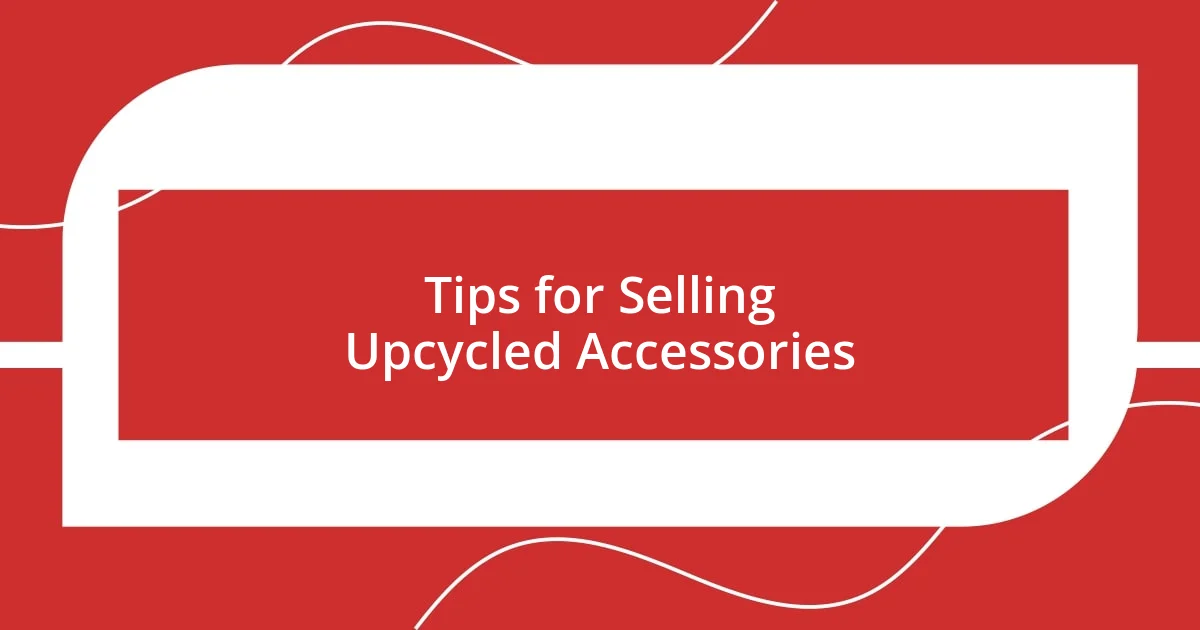
Tips for Selling Upcycled Accessories
When it comes to selling upcycled accessories, presentation is everything. I remember the first time I set up a booth at a local craft fair. I spent hours arranging my pieces, carefully selecting a backdrop that highlighted their unique flair. I realized that attractive displays not only draw attention but also tell the story behind each item. Have you ever seen something just sitting there, but once it’s presented beautifully, it suddenly grabs your eye? A well-styled display can transform perception.
Another critical factor is storytelling. Each accessory has its own history, and sharing that makes the piece more appealing. For example, I once sold a necklace made from vintage jewelry with a tale about its previous life, capturing the interest of potential buyers. When they hear the journey of an item, they’re more likely to form an emotional connection. I often ask myself: what memories did this piece hold before I got my hands on it? It’s incredible how such narratives can elevate the value of your work.
Finally, utilizing social media effectively can make a world of difference. I began posting behind-the-scenes glimpses of my upcycling process, and it transformed the way customers viewed my pieces. Engaging visuals and relatable captions can create a community around your brand. Have you tried sharing your creative journey? The excitement and interest can spark conversations with followers, leading them to become loyal customers eager to see what you’ll create next.






